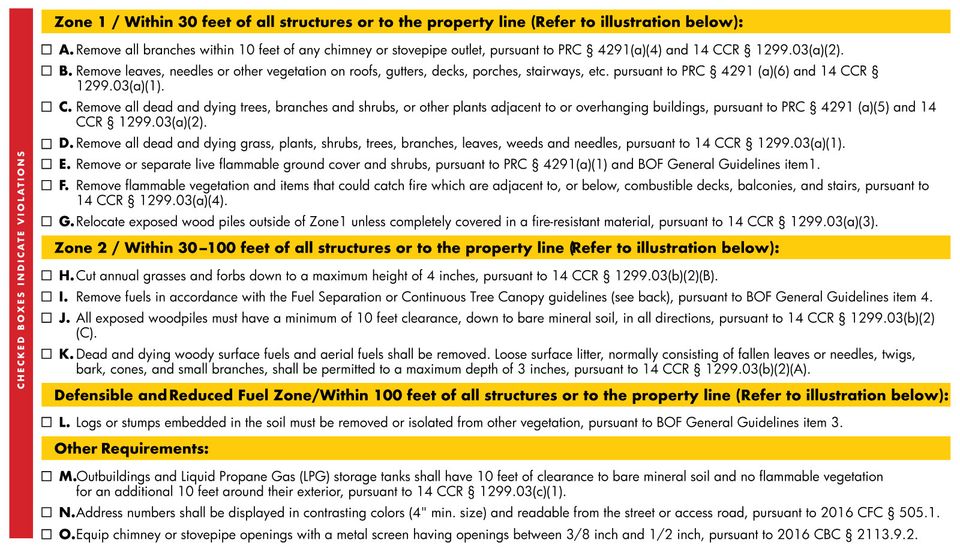HARDENING YOUR HOME
Flying embers can destroy homes up to a mile ahead of a wildfire. Prepare (harden) your home now before a fire starts.
Priority list for building or remodeling with ignition-resistant* materials:
- Roof (Above all else your roofing is the most important hardening feature)
- Eaves and Soffits
- Walls
- Decks
- Patio Cover
- Fencing
Other priority activities:
- Vents: Cover and protect all openings.
- Windows: Protect against blow-outs and install dual-paned windows.
- Rain Gutters: Screen or enclose.
- Chimney: Cover outlets with non combustible screens.
- Garage: Have an accessible fire extinguisher.
- Driveways: Ensure access to your home complies with local fire codes.
- Water Supply: Have multiple garden hoses that are long enough to reach all areas of your home.
Vertical Spacing
Eliminate opportunities for a vertical "fire ladder" by:
- Remove branches beneath large trees for a 6-foot minimum clearance.
- Create proper vertical spacing between shrubs and the lowest branches of trees by using the formula shown.
Horizontal Spacing
The spacing between gross, shrubs, and trees is crucial to reduce the spread of wildfire. The spacing needed is determined by the type and size of the shrubs and trees, as well as the slope of the land. For example, a property on a steep slope with larger plant life will require greater spacing between trees and shrubs than a level property that has small, sparse vegetation.
Fire-Safe Landscaping
Fire-safe landscaping isn't necessarily the same thing as a well-maintained yard. Fire-safe landscaping uses fire-resistant plants that are strategically planted to resist the spread of fire to your home.
Dead Tree Removal
If you have dead or dying trees on your property the entire tree needs to be removed to reduce wildfire risk. Visit ReadyforWildfire.org/dead-tree-removal to learn about permit requirements.


